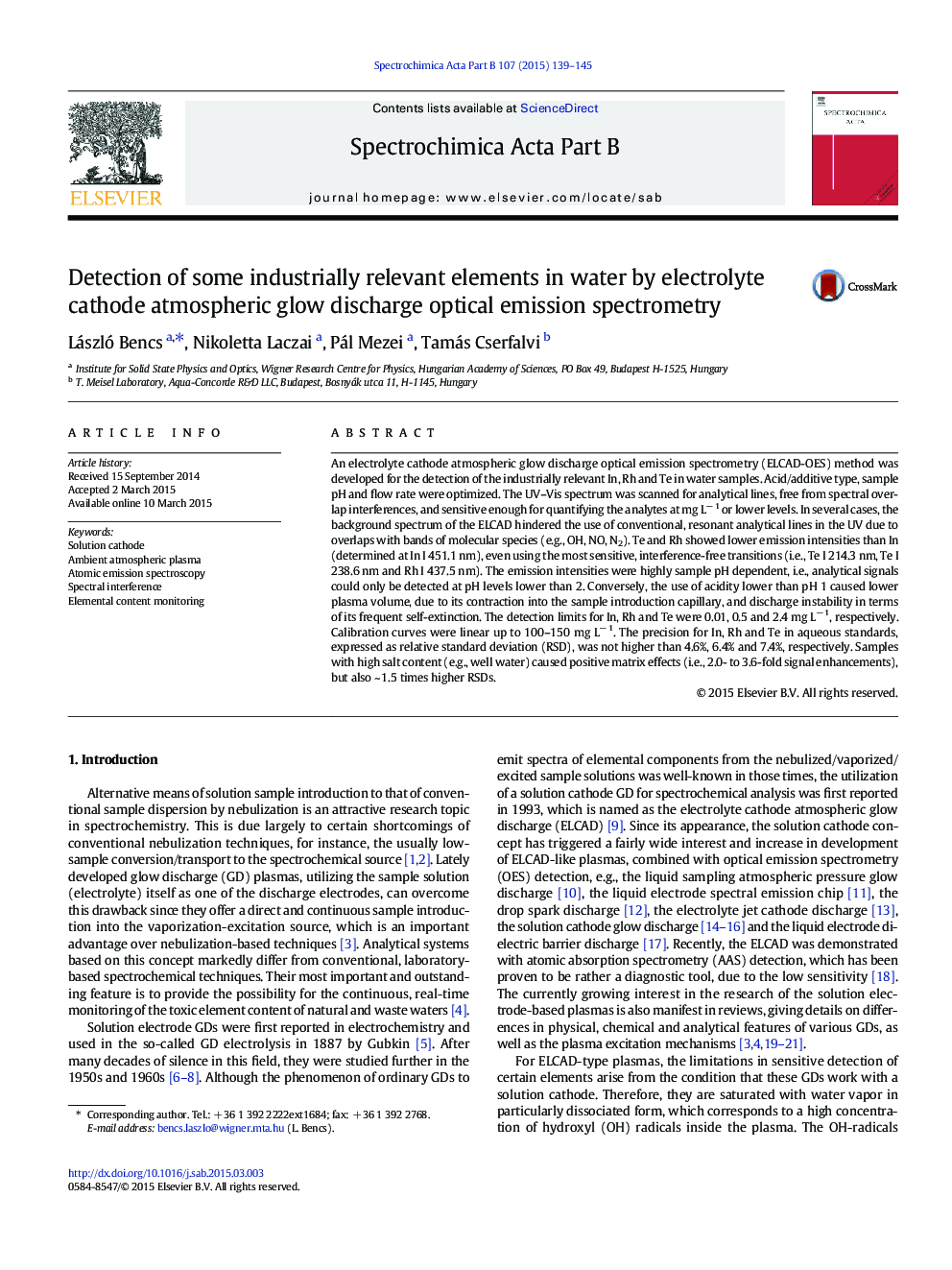| Article ID | Journal | Published Year | Pages | File Type |
|---|---|---|---|---|
| 1239630 | Spectrochimica Acta Part B: Atomic Spectroscopy | 2015 | 7 Pages |
•An ELCAD-OES method is developed for the monitoring of In, Rh and Te in waters.•The UV–Vis emission spectrum was studied for interference-free spectral lines.•Effects of sample pH, acid-type on signal intensities and GD voltage were studied.•Calibration and analytical figures for low- to high-salinity waters were reported.•Analytical performance was compared to those found for classic AAS/OES methods.
An electrolyte cathode atmospheric glow discharge optical emission spectrometry (ELCAD-OES) method was developed for the detection of the industrially relevant In, Rh and Te in water samples. Acid/additive type, sample pH and flow rate were optimized. The UV–Vis spectrum was scanned for analytical lines, free from spectral overlap interferences, and sensitive enough for quantifying the analytes at mg L− 1 or lower levels. In several cases, the background spectrum of the ELCAD hindered the use of conventional, resonant analytical lines in the UV due to overlaps with bands of molecular species (e.g., OH, NO, N2). Te and Rh showed lower emission intensities than In (determined at In I 451.1 nm), even using the most sensitive, interference-free transitions (i.e., Te I 214.3 nm, Te I 238.6 nm and Rh I 437.5 nm). The emission intensities were highly sample pH dependent, i.e., analytical signals could only be detected at pH levels lower than 2. Conversely, the use of acidity lower than pH 1 caused lower plasma volume, due to its contraction into the sample introduction capillary, and discharge instability in terms of its frequent self-extinction. The detection limits for In, Rh and Te were 0.01, 0.5 and 2.4 mg L− 1, respectively. Calibration curves were linear up to 100–150 mg L− 1. The precision for In, Rh and Te in aqueous standards, expressed as relative standard deviation (RSD), was not higher than 4.6%, 6.4% and 7.4%, respectively. Samples with high salt content (e.g., well water) caused positive matrix effects (i.e., 2.0- to 3.6-fold signal enhancements), but also ~ 1.5 times higher RSDs.
Graphical abstractFigure optionsDownload full-size imageDownload as PowerPoint slide
